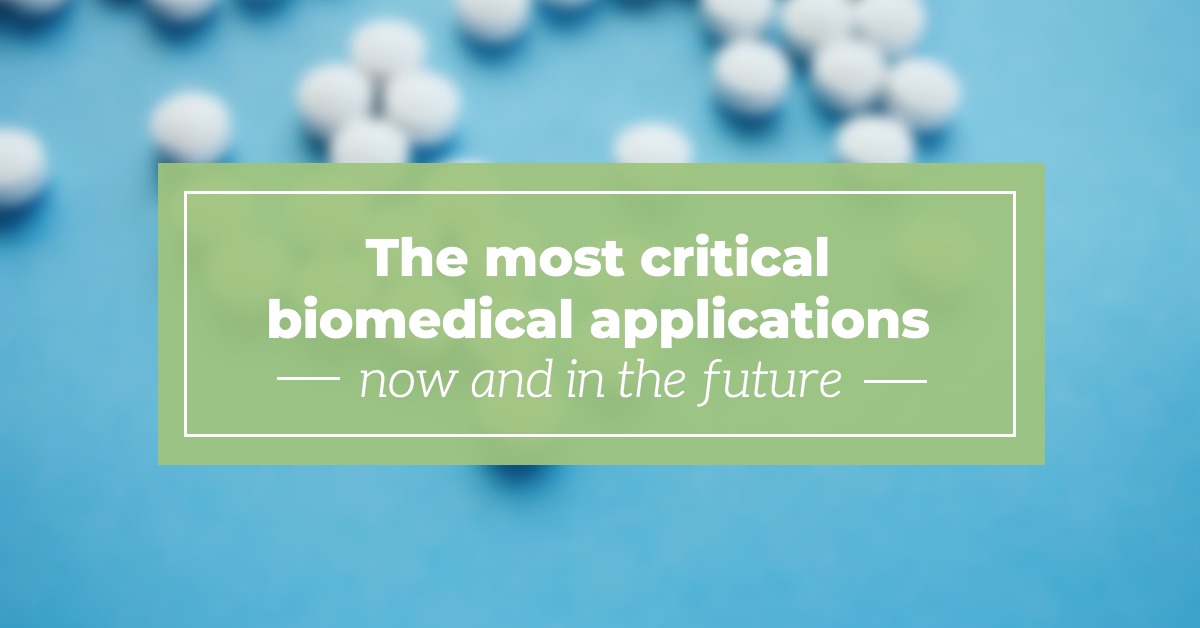
In recent years, healthcare practices have become more advanced, reliable, and accurate. Now, hospitals and clinics around the world benefit from modern medical equipment like telehealth monitoring systems and biosensors. Still, the work of patient care, disease prevention, and cures is far from over. Experts in biomedical engineering aim to uncover creative ways to solve the world’s epidemics. With a global pandemic at the forefront of attention, biomedical innovations are more important than ever.
Fortunately, new biomedical feats are enhancing research, diagnostic measures, and drug development for many patients thanks in part to semiconductor technology. For chip leaders, staying engaged in this field can help organizations focus on crucial needs and respond to immediate crises whenever needed.
In this article, we’ll explore the most forward-facing and critical biomedicine applications now and in the future:
Genomics advancements
Since the 1990s, scientists have leveraged semiconductor manufacturing techniques to enable large-scale genotyping and gene expression studies. Now, extraordinary advances in genomics technologies show promise in bringing about better personalized treatment and clinical care.
New genomic methods are revolutionizing testing, analytics, and delivery times across areas of diseases, cancer, and more. Today, scientists use novel genomic techniques to develop highly targeted medicine for diseases and medical conditions like cystic fibrosis, organ transplant complications, and neurodegeneration.
Tissue Engineering
Around the world, diseases like diabetes that call for transplant tissues highlight the need for tissue-engineering technologies. Tissue engineering, or regenerative medicine, is the practice of restoring, maintaining or improving damaged tissues or whole organs.
While tissue engineering is a newer field of medicine, the discipline offers possibilities to improve the success of skin graft surgeries, expand therapies for patients with severe chronic disease, and even develop bioartificial limbs. Regenerative breakthroughs also popularized bioprinting— similar to 3D printing— to create tissue structure and aortic valves for future surgeries using biomaterials.
Organ-on-a-Chip
Clinical studies to test a vaccine or potential treatment can take years, billions of dollars, and countless animal lives. Despite long and costly trials, using traditional animal models also doesn’t guarantee a way to model human diseases.
To improve drug development processes, scientists are developing microscale models that simulate human physiology called organ-on-a-chip. Adapted from microchip manufacturing methods, this technology enables close study of tissue behavior and organs in functional samples without animal testing. Currently, researchers are using this new model to better understand disease development, inflammation triggers, and new therapeutics in vitro.
Nanotechnology
New frontiers in nanotechnology aren’t just reserved for science fiction tropes anymore — they’re making real breakthroughs in biomedical applications. By studying and building nanomaterials, scientists can discover new and better ways to improve medicine and technology, including quantum dots and nanobots.
Quantum Dots
Semiconductor nanoparticles, or quantum dots, are small particles ranging from two to ten nanometers that have unique chemical and physical properties. By using these properties, scientists can adjust the size and composition of nanoparticles for both industrial and medical applications.
As quantum dots are revolutionizing solar panels and displays, its technology also offers valuable medical technology like biological sensors, probes, and invisible vaccine records.
Nanobots
Micro- or nano-scale robots can enter bloodstreams to perform certain tasks, like administering medication and killing cancer cells. By delivering drugs in specific target areas, patients can undergo less harmful side effects, lower risk of toxicity, and lower dosage. At the same time, doctors can diagnose and treat diseases more precisely at an atomic level.
Researchers continue to explore nanotechnology for tracking and drug delivery with microbubbles— micro-sized particles filled with gas— which can solve common chemotherapy issues and help molecular imaging.
Given the unmet needs of medicine and the impact of technology, semiconductor-enabled technologies will continue to help overcome major hurdles of research, testing, and drug development. If you’re interested in how semiconductor technology enables world-class innovation, sign up for updates from the Semiconductor Blog.



